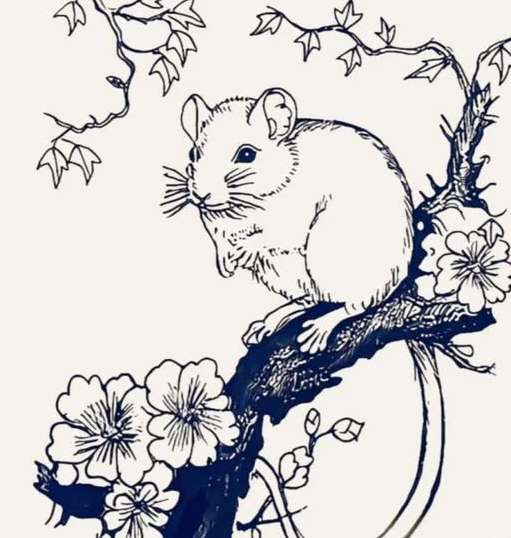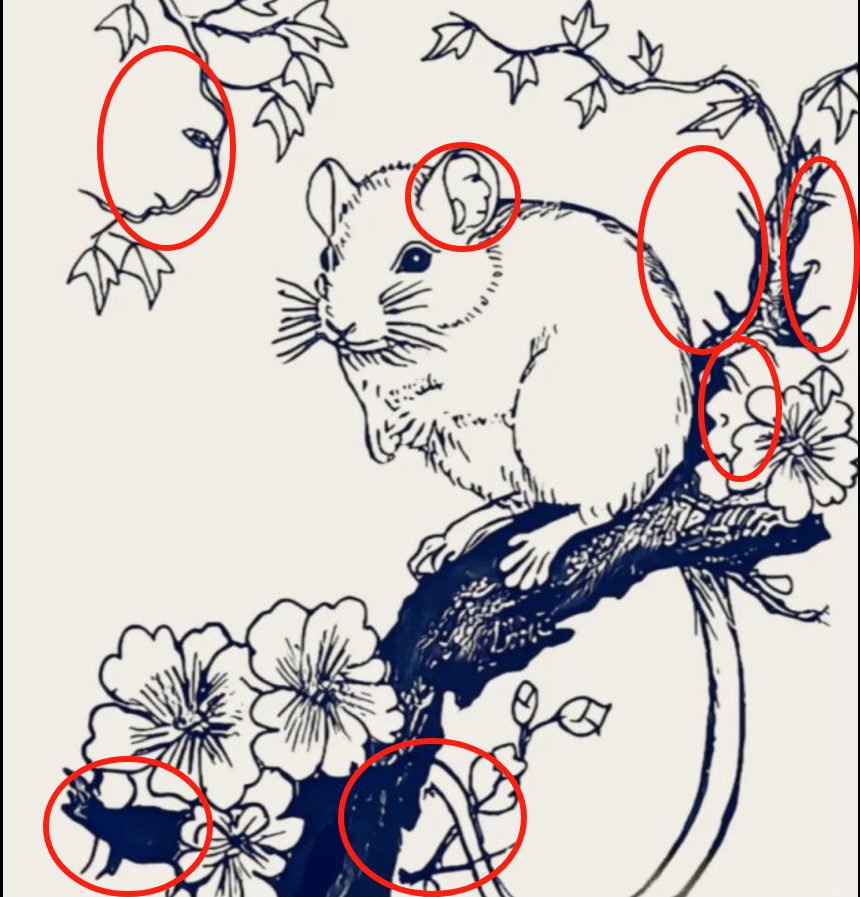Discovering the Enchanting World of Tree Mice
A Charming Encounter in Flowering Branches
Have you ever spotted a tiny mouse perched delicately on a blooming branch, its whiskers quivering as petals sway in the breeze? This delightful scene—of a petite tree mouse nestled among flowers—captures both nature’s whimsy and remarkable adaptability. Tree-dwelling rodents, with their soft fur and keen eyes, bring an unexpected touch of magic to our backyards and forests alike. In this article, we’ll dive into the secret lives of arboreal mice, explore their unique adaptations, and reveal why these little acrobats deserve a front-row seat in your wildlife watchlist.

What Are Tree Mice? A Brief Introduction
Not all mice scurry along the forest floor. Tree mice, sometimes called climbing mice, belong to various genera—such as Apodemus, Rhipidomys, and Chiropodomys—adapted for life far above the ground. Unlike their ground-dwelling cousins, tree mice:
- Possess long, prehensile tails for balance.
- Showcase padded feet with sharp claws for gripping bark.
- Live in nests built among branches or dense foliage.
These arboreal rodents thrive in diverse climates, from temperate woodlands to tropical rainforests, adding a burst of wildlife wonder to every canopy.
Natural Habitat: Where to Find These High-Flyers
Tree mice favor habitats rich in vertical structure and food sources:
- Deciduous Forests:Oaks, maples, and beeches offer abundant nuts and dense branch networks.
- Evergreen Woodlands:Pines and firs provide year-round cover and seeds for winter foraging.
- Tropical Rainforests:Lianas, bamboo thickets, and palm crowns serve as highways for climbing and nest sites.
- Riparian Zones:Riverbanks with mature trees supply smooth bark and diverse insect prey.
If you live near forest edges or well-wooded parks, keep an eye on flowering branches at dusk or dawn—prime times for tree mice to emerge and forage.

Physical Adaptations: Built for the Canopy
Tree mice display several remarkable traits that make them master climbers:
- Prehensile Tails:Acting like a fifth limb, their curled tails wrap around twigs and assist in tight turns.
- Specialized Foot Pads:Soft, fringed hairs on their soles increase friction, preventing slips on smooth bark.
- Sharp, Curved Claws:Tiny but sturdy, their claws dig into crevices, letting them ascend vertical trunks with ease.
- Large Eyes and Ears:Big, dark eyes maximize night vision, while sensitive ears detect predators or insect rustles.
- Lightweight Bodies:Weighing as little as 15–30 grams, they minimize falling risk and conserve energy during leaps.
These adaptations combine to create a nimble creature equally at home on narrow twigs or thick boughs.
Diet and Foraging: A Gourmet’s Guide to Branch Banquets
Tree mice aren’t picky—they’re opportunistic foragers who enjoy a varied menu:
- Seeds and Nuts:Acorns, pine nuts, and maple seeds offer high-fat calories.
- Fruits and Berries:Spring blossoms turn into berries, cherries, and figs—perfect for quick energy.
- Flowers and Nectar:Soft petals and sweet nectar provide moisture and simple sugars.
- Insects and Spiders:Beetles, caterpillars, and arachnids boost protein intake, especially critical during breeding season.
- Fungi and Lichens:In damp forests, mushrooms and lichen thalli supplement nutrition.
To find them in action, follow chewed seed husks along branches or listen for tiny nibbling sounds at the edge of twilight.

Reproduction and Family Life: Tiny Nests Among the Leaves
Breeding cycles for tree mice vary by species and climate, but share common features:
- Nesting Sites:Mothers build ball-shaped nests of moss, leaves, and bark high in tree forks or within epiphytic plants.
- Litter Size:Typical litters range from two to six pups, born blind and hairless.
- Maternal Care:The mother nurses her young for about three weeks, during which she fiercely guards the nest.
- Juvenile Learning:As the pups’ eyes open, they practice climbing on adjacent branches, mimicking their mother’s route-finding.
- Seasonal Peaks:In temperate zones, two breeding peaks occur—in spring and again in late summer—aligning with food abundance.
Observing a mother and her kits near sunset can be a rare treat—just remember to watch respectfully from a distance.

Predators and Survival Strategies
Life in the canopy carries risks: owls, hawks, martens, and arboreal snakes all consider tree mice a meal. To evade these threats, tree mice:
- Freeze-and-Blend:When danger looms, they flatten against bark and remain motionless, relying on camouflage.
- Rapid Zig-Zag Runs:Their erratic movements confuse aerial predators mid-chase.
- Escape Tunnels:Dense vine tangles and intertwined branches create labyrinthine routes that mice navigate with ease—traps for less nimble hunters.
These tactics ensure many tree mice survive to pass their climbing prowess on to the next generation.
How You Can Help Tree Mice Thrive
Supporting local tree-mouse populations starts in your own backyard:
- Plant Native Trees:Oaks, hickories, and berry-bearing shrubs supply food and nesting sites.
- Leave Deadwood:Fallen logs and dead branches provide natural bridges and insect-rich foraging grounds.
- Avoid Pesticides:Chemicals reduce insect prey. Opt for organic gardening to protect the mice’s food web.
- Create Brush Piles:Stacked branches mimic tangled canopies, offering safe nesting retreats.
- Install Nest Boxes:Small, ventilated wooden boxes hung 3–5 meters high can supplement natural cavities—just be sure they have a small entrance hole (~3 cm) to keep out larger animals.
By fostering structural diversity and minimizing chemical hazards, you’ll help these charismatic climbers flourish.

Conclusion: Celebrating the Hidden Acrobats of the Branches
Tree mice may be small, but their presence adds a distinctive spark to woodland ecosystems. From the moonlit foraging among blossoms to the delicate balance on slender twigs, these acrobatic rodents invite us to appreciate nature’s ingenuity on a miniature scale. By learning about their adaptations, diets, and nesting habits—and by creating supportive habitats in our own green spaces—we can ensure that the next time you glimpse a furry silhouette among flowering branches, it’s a thriving tree mouse, perfectly at home in its aerial realm.